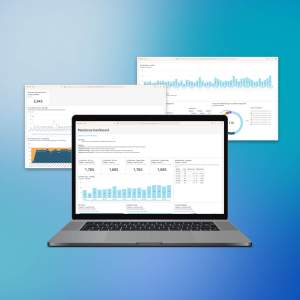RWD: Don't Collect Data as a Nice-to-Have – Have a Clear Business Purpose in Mind
Real-world data can provide significant value for pharma. However, this potential can only be realized if the appropriate data is generated and is processed in a manner that fulfils a clearly identified business purpose

- An enormous amount of real-world data is generated via apps, connected medical devices, and wearables
- Pharma often collects such data as a “nice-to-have” without a clear and measurable business purpose in mind
- The value of real-world, patient-generated data is unlocked when it is gathered and processed in a meaningful manner
As the digital transformation of the healthcare industry has progressed, data has been increasingly considered a “must have” for many stakeholders, including pharmaceutical companies. However, data in and of itself is meaningless if it does not serve a clear purpose. When it comes to real-world, patient-generated data, pharma has often failed to find that purpose and simply gathered data as a “nice-to-have.” Read how pharma can take a more strategic approach to real-world data and three use cases for how it can be utilized to serve clear business purposes.
Pharma Has a Wealth of Data It Doesn’t Know How to Use
In many industries, the use cases for real-world data and how it can serve business purposes can be relatively straight-forward. For pharma, however, it has been rather more challenging to identify the value of patient-generated data and how investing in it can be justified from a business perspective.
With an ever-increasing number of patients using digital tools such as treatment management apps, connected medical devices, and wearable devices, there has long been a feeling that the data they generate must be useful.
In many cases, that is true. But for the value to be realized, a business need with a clear and measurable impact is required. In our discussions with pharma regarding real-world data, several meaningful use cases have arisen that can provide value.
Real-World Data: 3 Real-World Use Cases
Here are three use cases that can be linked to a clear and measurable business purpose.
1. Validating the Impact of Adherence & Persistence Support
Improving adherence and persistence are primary objectives of pharma digital patient support efforts. Doing so represents something of a win-win: improving patient outcomes while providing a commercial benefit to pharma through increased refill rates.
Real-world data can be used to validate the impact of such patient support programs. For example, we run validated adherence questionnaires, such as the Medication Adherence Report Scale (MARS-5), among select patient populations. The results, particularly when repeated at defined intervals, can help measure the self-reported adherence among patients and compared to other cohorts.
In doing so, the real-world impact of pharma’s adherence and persistence support can be measured to a far greater degree than is otherwise possible. As a result, program adoption becomes a powerful KPI for measuring the business success of a program.
2. Validating the Impact of Patient Education Activities
A similar methodology can be applied to pharma’s patient education and awareness activities. In a recent campaign we ran for a pharma partner, a target patient population was provided educational content regarding the flu vaccination.
Surveys asking for patients’ position regarding the vaccination were run before, during, and after the campaign. The results, when combined with data regarding the number of content pieces respondents had been exposed to, helped quantify the impact of the campaign.
The result of the campaign, in this case, was that the share of people who indicated that they would get vaccinated among the group that received educational content was twice as high as the share from the control group that did not.
3. Prescription Decision Insights
Patient activation is an increasingly important topic for pharma, with decisions regarding the use of resources linked to the role patients play in prescription decisions.
In a recent survey we ran among patients taking diabetes treatments, for example, we found that patients taking a particular medication were up to nine times likelier to have specifically requested it than those taking other medications.
This information can directly influence pharma’s patient activation decisions and provide meaningful insights on topics such as sales force effectiveness in comparison to competitors.
For each of these use cases, more nuances are necessary on a case-by-case basis depending on individual circumstances and requirements. However, the fundamental principle is that when it comes to real-world, patient-generated data, connecting the raw data to meaningful topics is a critical step.
smartpatient Insights: Making RWD Valuable for Pharma
smartpatient Insights is a sub-brand created with the sole intention of helping partners in the pharmaceutical and life science industries generate real value from data.
This can be achieved by utilizing access to over 9,000,000 patients worldwide, from which patient panels can be formed based on therapeutic areas, treatments, and other demographic data depending on partners’ needs.
If you would like to learn more about smartpatient Insights, you can visit the website by clicking here or book a meeting by clicking here.





